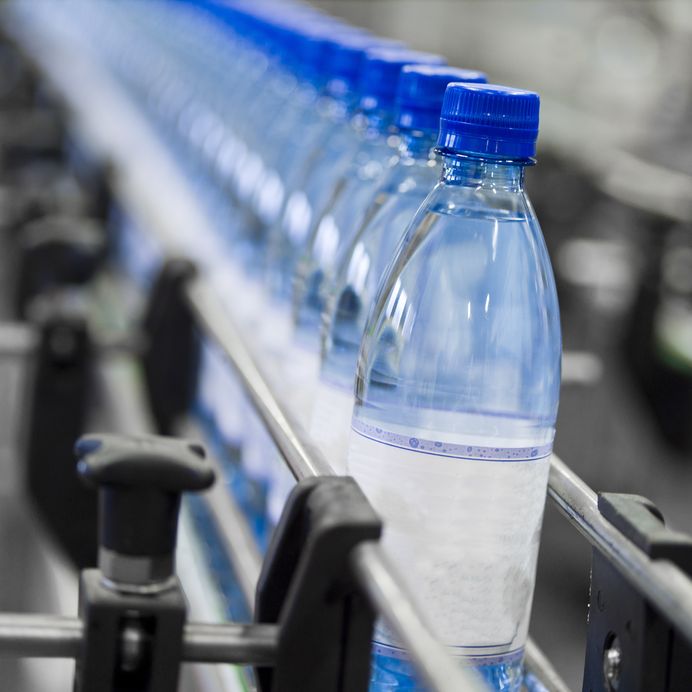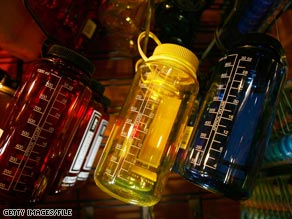By Joshua Zaffos, Colorado Springs Independent
Posted on June 26, 2008
From car seats to condoms, nasty compounds have invaded our lives.
Hormones are going haywire, and our human future is at risk.
I am half the man my father is.
This disturbing fortune came to me about five years ago, but not from an odd relative or a sadistic girlfriend. Instead, this dinner-table diagnosis came from Theo (short for Theodora) Colborn, an internationally known scientist who has helped develop the field of research exploring how chemical compounds interfere with the hormones that guide human development.
Known as endocrine disruption, chemicals found in computer screens and car seats, shower curtains and shampoo, plastic water bottles and prophylactics are skewing our odds against cancers and causing developmental delays and reproductive roadblocks, including declining sperm counts.
So, when Colborn informed me of my inferior manhood, I took consolation in the fact that she was indicting my entire generation — and her own — for loading our natural environment, our workplaces and our homes with tens of thousands of chemical compounds without really having a clue about what we’re doing. Our Stolen Future, the book Colborn co-authored in 1996, first delivered this bad news to the general public.
More than a decade later, scientists are still conducting experiments and measuring results, from cramped basement labs at universities to expansive high-country lakes in the wilderness. The hypotheses generally aren’t questions of whether chemicals are pervading and persisting in the environment, but rather how severely they are stunting our development and health. The federal government has investigated these questions with timidity, if not contempt, operating a regulatory system practically beholden to the chemical industry.
With half of my manhood at stake and hopes for a better assessment in the future, I’m wondering how we can heed the warning signs and reverse our chemical course.
A day in my half-life
For years, I started off each day drinking coffee out of a metallic cup, likely coated with bisphenol-A, a chemical commonly used to line plastic bottles and other food and beverage cans and containers. Anyone who has lugged around a Nalgene bottle made of polycarbonate plastic, trying to save the Earth one paper cup at a time, has gotten his or her share of bisphenol-A, which leaches from containers into liquids to enter our bodies. A U.S. Centers for Disease Control study detected bisphenol-A in 93 percent of all Americans.
Inside us, bisphenol-A mimics estrogen, plugging into hormone receptors; this is endocrine disruption. In pregnant or breastfeeding mothers and young and prepubescent children, it can have critical impacts, rewiring our developmental profiles and opening up our risks for cancers and physical and behavioral abnormalities. Lab tests suggest that chronic, low-dose exposure to bisphenol-A — like drinking out of a coated cup or polycarbonate bottle daily — may cause women to have greater chances of breast cancer and polycystic ovary syndrome, a leading cause of infertility, and men to have increased odds of prostate cancer and reduced sperm counts.
That’s a lot to think about during the day’s first cup of coffee or sip of water. Now I try to stick to ceramic mugs and glasses.
As my body starts to properly caffeinate in the mornings, I usually sit in front of a laptop and do whatever it is writers do to put off writing — checking e-mails and boxscores — until I’m warmed up. As a computer warms up, particles inside start to fly and some catch a ride on dust. For years, I breathed in polybrominated diphenyl ethers (PBDEs) from my laptop.
These compounds are flame-retardants, nearly universally used in couch cushions, televisions, cars and carpets. PBDEs have similar chemical structures to thyroid hormones, and, according to lab tests, they can lower our bodies’ production of the real thing.
Over time, thyroid-hormone deficiencies can hurt metabolism. Hypothyroidism causes fatigue, depression, anxiety, hair loss and a waning libido. Women with low thyroid-hormone counts are five times more likely to have children with IQs that qualify them as mildly retarded, according to one study. A 2005 experiment found that a single low dose of a common PDBE given to rats in utero resulted in a class of hyperactive rodents with persistent low sperm counts.
Read moreLow Sperm Counts and Deformed Penises: The Chemical Industry Has a Hold on Your Reproductive Future






